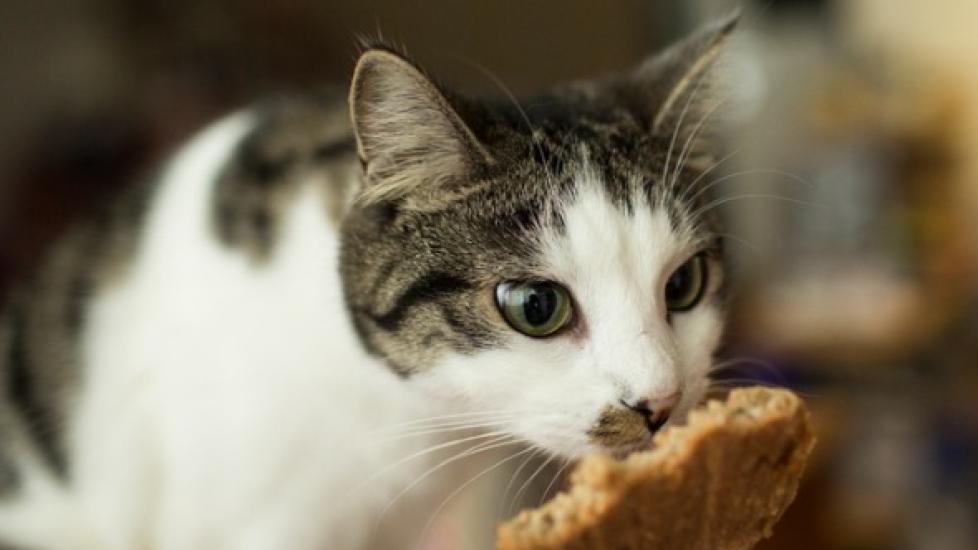Can Cats Taste Sweet Things?
Most pet parents know not to leave chocolate chip cookies on the table or s’mores around the campfire because their dog will definitely eat them, and chocolate is toxic for dogs. But for some reason, you might find that your cat isn’t as motivated to eat them.
And yet, some people report that their cats do like sweet things like marshmallows. Can cats actually taste sweets, or not? Let’s dig in to some of the fascinating details!
Can Cats Taste Sweetness?
Researchers have discovered that cats, seemingly alone among the mammal groups, lack some of the proteins needed to create the gene that helps the body taste sweets.
The taste bud in humans that’s designated to identify “sweet” tastes is normally made up of two separate proteins, and cats only have one of these. When a cat eats something sweet, they do taste something, but it just isn’t what we think of as sweet. So a marshmallow may taste like a potato to cats, for example.
Why Can’t Cats Taste Sweet Things?
It’s a strange concept, but looking at cat biology, it makes sense.
Cats are obligate carnivores, meaning that their systems were designed to process meat. The average cat would be hunting mice and not raiding the farmers’ corn fields for corn. And large cats, like lions and tigers, are taking down antelopes and other meat-based prey—not seeking out fruits and other carbohydrates.
If your system can’t process carbohydrates (which is what most sweets are made of), you really don’t need to be able to taste or appreciate them. Not only are they unhealthy for cats, but having too many carbs likely leads to obesity, diabetes, and other health problems.
Cats are likely protecting their own health in a way, by not eating foods they can’t process and aren’t good for them.
Cat Food and Carbohydrates
Since cats are not able to process carbohydrates and similar foods well, why do so many cat foods contain high levels of carbohydrates?
In recent years, that trend has started to change. More and more low-carbohydrate cat foods have entered the market, as well as those specifically designed to have higher protein levels.
Veterinarians have also seen the link between diabetes, obesity, and a cat’s diet, and they are now recommending more canned diets, which have higher protein and lower carbohydrate levels.
Although most dry cat foods are still very rich in carbohydrates, some (mostly prescription foods) have been designed as dry food that’s higher in protein and lower in carbs than the average dry food.
Unfortunately, it’s difficult and expensive to manufacture a low-carb dry cat food, so a diet like this probably won’t be widely available until pet parents create the demand. But dry food is a convenient, low-cost option for pet parents. In the meantime, there is still the option of high-protein canned cat foods.
Cat Taste Buds vs. Human Taste Buds
Cats and humans differ anatomically in the number and type of taste buds they have. Most sources consider humans to have five or six taste bud types: sour, bitter, salty, umami (meatiness), and sweet (plus possibly fat). In total, we have about 9,000 taste buds.
On the other hand, cats only have about 500 taste buds and lack the protein to appreciate sweets. It appears that they can taste all the other things that we can. The only difference is that sweet things taste different for them.
Cats are particularly sensitive to the bitter sense of taste, which might signify spoiled or unsafe foods. This is one reason that the bitter sprays on the market are often effective in deterring cats from licking wounds or chewing forbidden items in the house.
There is some indication that cats might even have a receptor for adenosine triphosphate (ATP). This is a molecule that provides energy in every living cell and may well be a signal for meat to the cat.
For the most part, cats seem to like the foods that should be the staples of their diet—proteins and fats. So they tend to crave foods that satisfy those tastes--umami and the not fully defined fat and ATP flavors.
Why Do Some Cats Like Licking or Eating Sweet Things?
Some cats do like marshmallows, ice cream, and other sweets, but they are tasting something different than we do, and they may like these foods for different reasons.
There are many different reasons your cat may choose to lick an empty ice cream bowl or take a few bites of a cookie. They may be more interested in the fat content than the sweetness, since cats are indeed able to taste/sense fats.
They also have interest in anything with animal protein in it (such as milk, cream, or ice cream), foods with strong smells, or warm food (the temperature of freshly killed prey). Plus, they probably have a general curiosity about anything with a new texture or mouth feel.
Or perhaps they just like the taste of whatever their version of “sweet” is. Whatever the reason, it certainly isn’t uncommon for cats to take a few licks of some sweets.
Dangers of Cats Eating Sweet Things
It’s a good thing cats can’t taste sweets, because it keeps them from seeking out high-carb foods that aren’t healthy for their bodies. Over time, it can lead to health issues like diabetes and obesity.
But if your cat does like to eat sweet things for whatever reason, do not indulge their habit. Make sure you keep the sweets out of reach, just like you do for your pup. Offer them a meat-based cat treat instead—they will surely be just as happy.
Featured image: iStock.com/kmsh
